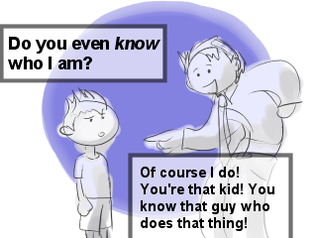TPE 8: Learning About Students
|
Prior to Meeting Student
With the exception of perhaps kindergarten, there are several instances where you might get to know a child prior to actually meeting them. Student information is often shared among staff. Teachers always warn other teachers of existing problems or known issues that may pose a threat to the teacher or other students. While it is best to wait until you can form your own opinion about the child these information should be kept in mind if the student may act hostile in your presence. Initial Meeting with Student During the first day of school it is important to let the student know that you will be their teacher and that you will be getting to know each and everyone of them as they will each get to know you. The first day is a good day to get to know the students by having them do a little survey. The survey does not have to be written, it can be used as four corners activity where the students go to a corner based on the option set on the screen or board. Continuous Learning While students are generally honest about their perceived notion of who they think they are, it is best to learn about the student over a longitudinal time period. For instance, the student that you expect to participate everyday in class because they have traveled to many exotic locations around may be the one that is quite shy. They may not volunteer immediately, but if you give them enough time to breath and respond in other ways besides verbally, it would help you understand them further on how they see and speak to the world. |
| CA- CCTC: TPE's (Teaching Performance Expectations) |
| Standard : A. Making Subject Matter Comprehensible to Students |
| TPE : TPE
1: Specific Pedagogical Skills for Subject Matter Instruction TPE 1 is divided into two categories intended to take into account the differentiated teaching assignments of multiple subject and single subject teachers. Multiple subject credential holders work in self-contained classrooms and are responsible for instruction in several subject areas; single subject teachers work in departmentalized settings and have more specialized assignments. These categories are Subject-Specific Pedagogical Skills for Multiple Subject Teaching Assignments (1-A), and Subject-Specific Pedagogical Skills for Single Subject Teaching Assignments (1-B). |
| Component : TPE 1A: Subject-Specific Pedagogical Skills for Multiple Subject Teaching Assignments |
|
Standard Area : Teaching
Reading-Language Arts in a Multiple Subject Assignment Candidates for a Multiple Subject Teaching Credential demonstrate the ability to teach the state-adopted academic content standards for students in English-Language Arts (K-8). They understand how to deliver a comprehensive program of systematic instruction in word analysis, fluency, and systematic vocabulary development; reading comprehension; literary response and analysis; writing strategies and applications; written and oral English Language conventions; and listening and speaking strategies and applications. They know how to strategically plan and schedule instruction to ensure that students meet or exceed the standards. Candidates create a classroom environment where students learn to read and write, comprehend and compose, appreciate and analyze, and perform and enjoy the language arts. They understand how to make language (e.g., vocabulary, forms, uses) comprehensible to students and the need for students to master foundational skills as a gateway to using all forms of language as tools for thinking, learning, and communicating. They understand how to use instructional materials that include a range of textual, functional and recreational texts and how to teach high quality literature and expository text. They understand that the advanced skills of comprehending narrative and informational texts and literary response and analysis, and the creation of eloquent prose, all depend on a foundation of solid vocabulary, decoding, and word-recognition skills. Candidates teach students how to use visual structures such as graphic organizers or outlines to comprehend or produce text, how to comprehend or produce narrative, expository, persuasive and descriptive texts, how to comprehend or produce the complexity of writing forms, purposes, and organizational patterns, and how to have a command of written and oral English-language conventions. They know how to determine the skill level of students through the use of meaningful indicators of reading and language arts proficiency prior to instruction, how to determine whether students are making adequate progress on skills and concepts taught directly, and how to determine the effectiveness of instruction and students’ proficiency after instruction. |

